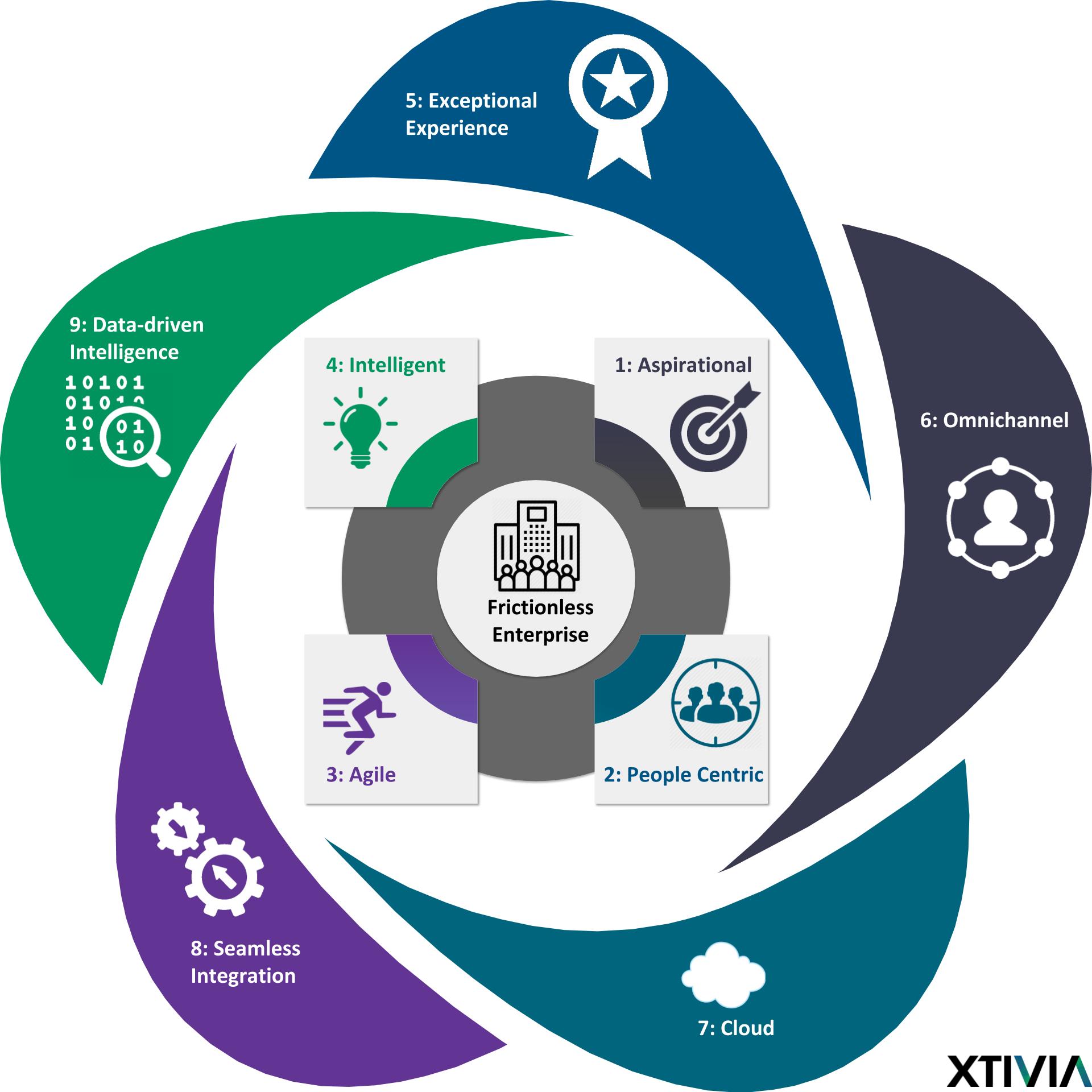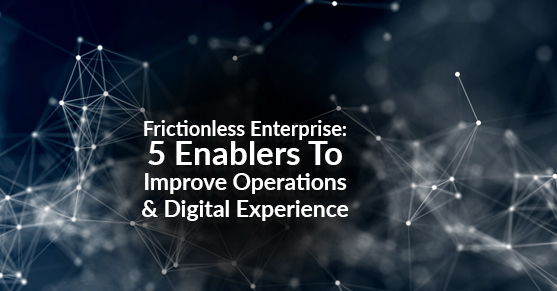In my last article, I introduced the frictionless enterprise as the foundation of a truly successful digital transformation initiative. I discussed how there are many factors that go into designing and running a frictionless enterprise, but there are four traits that define it: aspirational culture, people-centricity, agility and intelligence. These four traits work best when supported by the five enablers of a frictionless enterprise.
The Five Enablers Of Frictionless Enterprise
Frictionless enterprise refers to an enterprise being frictionless in all aspects, not just technology or for those in the digital world. For the purposes of this article, however, I will focus on how frictionless enterprise can be enabled from a technical/digital perspective.
An enabler is a supporting mechanism that makes other systems run more smoothly. In an engine, this might be a ball bearing. In a manufacturing facility, it might be a conveyor belt. In a frictionless enterprise, the five enablers are exceptional experience, omnichannel presence, seamless integration, data-driven intelligence and the cloud. These enablers are getting mainstream attention within the business ecosystem for being levers of flow; when combined with the four traits, operations throughout all aspects of an enterprise are more productive.

1. Exceptional Experience
Good isn’t enough anymore. Companies are competing with the last best experience a customer or user has had with digital enterprise. Exceptional is the new baseline of experience. Anything less leaves reason in your customers’ minds that your competitors could do better. Exceptional experience is not achieved simply through a mission statement but is instead measured by the collective actions of an enterprise. It takes all members of an organization to act with consistency in all its interactions with its customers, and just one bad experience with the organization can derail the entire relationship.
2. Omnichannel Presence
Prospective and current customers want connection with companies on their terms, be it the channel, time of day or location. Personalization, responsiveness and brevity must be delivered cohesively on all channels your customers use to connect with your company. Omnichannel means to be visible everywhere your customers are to share relevant information that matches where they are in their relationship with your brand (versus multi-channel marketing in which the same message is broadcast on multiple channels).
3. Seamless Integration
Technology needs to be invisible to the naked eye; people expect things to “just work.” In fact, they now expect to say words in the air and have groceries show up at their door! Regardless of the number of back-end systems, your digital experience must appear seamless to your customers and users.
With the rapid proliferation of software-as-a-service applications, the problem of seamless integration is exploding, and it requires an enterprise to set the right tone in its integration strategy. Additionally, enterprises expect more from data despite it being scattered across more systems than ever before and, therefore, need to choose the right integration tooling for seamless functionality and agility.
4. Data-Driven Intelligence
Having data about your customers is a good beginning, but you also need the ability to intelligently and reliably use that data. Data analytics can predict trends and deliver content, resources and information based on customer and user behavior and preferences. Experience is not helpful without intelligence based on real-time data. This is related to sentient marketing, where enterprise technology can sense and respond intelligently, in real time and with scalability to events in its environment. And don’t let the word “marketing” fool you — this applies throughout a customer’s journey with an organization, from prospect through advocacy.
5. Cloud
Leveraging cloud capabilities for IT systems gives you near-infinite scalability, easy deployment of new features and heightened security. Cloud computing is available in a few forms: infrastructure-as-a-service (IaaS), platform-as-a-service (PaaS), software-as-a-service (SaaS) and, most recently, function-as-a-service (FaaS or serverless). It removes many of the hurdles that typically slow down an enterprise and results in greater IT and business agility.
IT Leaders Are Being Called Out
IT leaders are being called upon more than ever to help design future-proof enterprise technology and operations. The term “digital business officer” captures the flavor of the new responsibilities of business process management, staying current with emerging technologies and new possibilities for application, and communicating enterprise-wide about what’s happening with the technical infrastructure. This demonstrates that we must understand business outcomes, determine the right technology investments and collaborate effectively with non-tech staff to make frictionless enterprise a reality.
By combining the four traits of frictionless enterprise with the five enablers that support them, you (and your enterprise) have a winning recipe for success.
This post was originally published for Forbes Tech Council

